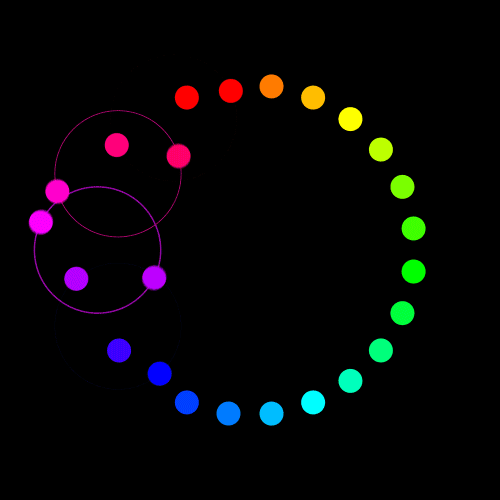
Computers as components principles of embedded computing system design
副标题:无
作 者:(美)Marilyn Wolf著
分类号:
ISBN:9787111412281
微信扫一扫,移动浏览光盘
简介
由沃尔夫编著的《嵌入式计算系统设计原理(英文版·第3版)》从组件技术的视角出发,介绍了嵌入式系统设计技术和技巧。本书自第1版出版以来,已广泛应用于教学,并为实践设计提供了宝贵指南。第3版根据最先进的技术发展进行了更新,更详细阐述操作系统中的进程通信和缓冲,尤其是新增了数字信号处理、多媒体和cps方面的实例。作者介绍了德州仪器、arm、美国微芯科技公司的最新处理器及软件、操作系统、网络、消费性电子设备等。不论是进行软硬件设计的研究人员、学生还是专家,都能从marilyn wolf的集成化工程设计方法中获益匪浅。
《嵌入式计算系统设计原理(英文版·第3版)》特色
以实际芯片(arm芯片、ti c55x dsp和pic)为例,进行相关设计技术和技巧的说明,向读者介绍如何将这些理论付诸于设计实践。
在所有关键课题讨论中都尤为强调现实中的设计实践,从而为学生和设计人员提供了最先进技术的指导。
对设计实践中所必需的基本应用技术进行重点讨论,帮助读者在实际工作中熟练地设计大型的、复杂的嵌入式系统。
目录
foreword to the first edition
preface to the first edition
preface to the second edition
preface to the third edition
chapter 1 embedded computing
1.1 introduction
1.2 complex systems and microprocessors
1.3 the embedded system design process
1.4 design example: model train controller
1.5 a guided tour of this book
1.6 summary
what we learned
further reading
questions
lab exercises
chapter 2 instruction sets
2.1 introduction
2.2 preliminaries
2.3 arm processor
2.4 picmicro mid-range family
2.5 ti c55x dsp
2.6 ti c64x
2.7 summary
what we learned
further reading
questions
lab exercises
chapter 3 cpus
3.1 introduction
3.2 programming input and output
3.3 supervisor mode, exceptions, and traps
3.4 co-processors
3.5 memory system mechanisms
3.6 cpu performance
3.7 cpu power consumption
3.8 design example: data compressor
3.9 summary
what we learned
further reading
questions
lab exercises
chapter4 computing platforms
4.1 introduction
4.2 basic computing platforms
4.3 the cpu bus
4.4 memory devices and systems
4.5 designing with computing platforms
4.6 consumer electronics architecture
4.7 platform-level performance analysis
4.8 design example: alarm clock
4.9 design example: audio player
4.10 summary.
what we learned
further reading
questions
lab exercises
chapter 5 program design and analysis
5.1 introduction
5.2 components for embedded programs
5.3 models of programs
5.4 assembly, linking, and loading,
5.5 compilation techniques
5.6 program-level performance analysis
5.7 software performance optimization
5.8 program-level energy and power analysis and optimization
5.9 analysis and optimization of program size
5.10 program validation and testing
5.11 design example: software modem
5.12 design example: digital still camera
5.13 summary
what we learned
further reading
questions
lab exercises
chapter 6 processes and operating systems
6.1 introduction
6.2 multiple tasks and multiple processes
6.3 multirate systems
6.4 preemptive real-time operating systems
6.5 priority-based scheduling
6.6 interprocess communication mechanisms
6.7 evaluating operating system performance
6.8 power optimization strategies for processes
6.9 example real-time operating systems
6.10 design example: telephone answering machine
6.11 design example: engine control unit
6.12 summary
what we learned
further reading
questions
lab exercises
chapter 7 system design techniques
7.1 introduction
7.2 design methodologies
7.3 requirements analysis
7.4 specifications
7.5 system analysis and architecture design
7.6 quality assurance
7.7 summary
what we learned
further reading
questions
lab exercises
chapter 8 networks and multiprocessors
8.1 introduction
8.2 why networks and multiprocessors?
8.3 categories of multiprocessors
8.4 distributed embedded systems
8.5 mpsocs and shared memory multiprocessors
8.6 design example: video accelerator
8.7 application example: compact disc
8.8 summary
what we leamed
further reading
questions
lab exercises
glossary
references
index
preface to the first edition
preface to the second edition
preface to the third edition
chapter 1 embedded computing
1.1 introduction
1.2 complex systems and microprocessors
1.3 the embedded system design process
1.4 design example: model train controller
1.5 a guided tour of this book
1.6 summary
what we learned
further reading
questions
lab exercises
chapter 2 instruction sets
2.1 introduction
2.2 preliminaries
2.3 arm processor
2.4 picmicro mid-range family
2.5 ti c55x dsp
2.6 ti c64x
2.7 summary
what we learned
further reading
questions
lab exercises
chapter 3 cpus
3.1 introduction
3.2 programming input and output
3.3 supervisor mode, exceptions, and traps
3.4 co-processors
3.5 memory system mechanisms
3.6 cpu performance
3.7 cpu power consumption
3.8 design example: data compressor
3.9 summary
what we learned
further reading
questions
lab exercises
chapter4 computing platforms
4.1 introduction
4.2 basic computing platforms
4.3 the cpu bus
4.4 memory devices and systems
4.5 designing with computing platforms
4.6 consumer electronics architecture
4.7 platform-level performance analysis
4.8 design example: alarm clock
4.9 design example: audio player
4.10 summary.
what we learned
further reading
questions
lab exercises
chapter 5 program design and analysis
5.1 introduction
5.2 components for embedded programs
5.3 models of programs
5.4 assembly, linking, and loading,
5.5 compilation techniques
5.6 program-level performance analysis
5.7 software performance optimization
5.8 program-level energy and power analysis and optimization
5.9 analysis and optimization of program size
5.10 program validation and testing
5.11 design example: software modem
5.12 design example: digital still camera
5.13 summary
what we learned
further reading
questions
lab exercises
chapter 6 processes and operating systems
6.1 introduction
6.2 multiple tasks and multiple processes
6.3 multirate systems
6.4 preemptive real-time operating systems
6.5 priority-based scheduling
6.6 interprocess communication mechanisms
6.7 evaluating operating system performance
6.8 power optimization strategies for processes
6.9 example real-time operating systems
6.10 design example: telephone answering machine
6.11 design example: engine control unit
6.12 summary
what we learned
further reading
questions
lab exercises
chapter 7 system design techniques
7.1 introduction
7.2 design methodologies
7.3 requirements analysis
7.4 specifications
7.5 system analysis and architecture design
7.6 quality assurance
7.7 summary
what we learned
further reading
questions
lab exercises
chapter 8 networks and multiprocessors
8.1 introduction
8.2 why networks and multiprocessors?
8.3 categories of multiprocessors
8.4 distributed embedded systems
8.5 mpsocs and shared memory multiprocessors
8.6 design example: video accelerator
8.7 application example: compact disc
8.8 summary
what we leamed
further reading
questions
lab exercises
glossary
references
index
Computers as components principles of embedded computing system design
- 名称
- 类型
- 大小
光盘服务联系方式: 020-38250260 客服QQ:4006604884
云图客服:
用户发送的提问,这种方式就需要有位在线客服来回答用户的问题,这种 就属于对话式的,问题是这种提问是否需要用户登录才能提问
Video Player
×
Audio Player
×
pdf Player
×


